Spanish Food: Basic Overview
Common Ingredients
Common Cooking Methods
Courses
Meals
Key Taste
Eating Etiquette
Meal Presentation
Culinary Festivals
Influence and Fusion
Popular Types of Spanish Food
-
Rice Dishes
Paella is the national dish of Spain, of which rice is the main component.
Rice normally goes with meat, seafood, vegetables, and spices.
Their preparation ranges from simmering in rich broths (often infused with saffron) to being baked.
Locals often cook them in large quantities and share these dishes with others.
-
Soups
Spanish soups use simple ingredients to make exquisite dishes.
They can be thin, rich, or creamy, and can be served hot or cold.
Some of them are ideal for vegan/vegetarian diets.
-
Stews
Stews are comforting bowls of richly flavored, slow-cooked delicacies.
These dishes often feature a mix of meats, vegetables, and legumes, simmered for hours to create deep flavors.
-
Sandwiches
Spanish sandwiches can be bite-sized treats to fulfill delights.
Small sandwiches are commonly served in tapas.
They appear in many Spanish bars and cafes, reflecting the nation’s love for casual, yet flavorful, dining.
-
Desserts
Spanish desserts are diverse in style, such as cakes, tarts, candies, and pastries.
They range from light and fruity to rich and nutty.
Almonds and nuts are staple ingredients in many desserts.
Spanish dishes have been shaped by regional diversity and historical influences. From the sun-drenched Mediterranean coast to the rugged northern mountains, each region contributes its ingredients and cooking methods.
The culinary delights of Spanish are also deeply rooted in locally sourced, fresh ingredients like olives, peppers, and a bounty of seafood, underlining the numerous similarities with dishes from the Mediterranean.
The influence of Moorish and Roman legacies is evident in the aromatic spices and rice dishes that grace the Spanish table. The cooking traditions from neighboring countries, such as Portuguese specialities and French specialties, are other major sources of inspiration.
In the reading, you’ll have a comprehensive view of traditional foods from Spain, understanding their global recognition and nutritional value. Then, you’ll gain insights into the most popular specialties in the country. After that, let’s get some tips on pairing them with suitable beverages.
Let’s check out 27 of the most common delicacies below.
27 Popular Spanish Dishes with Filters
Below are 27’s most standout delights in Spain, ranked by their popularity. With the help of the filter tool, you can easily search them by main components, taste, preparation method, etc.
From the most favored, traditional, and national, to the exotic delicacies and street-level offerings, they promise to amaze you.
Spanish cuisine is famous worldwide, with paella at the forefront.
Spanish street food has options ranging from churros, fried dough pastries served with thick hot chocolate, to bocadillos, hearty sandwiches filled with ham or Spanish omelet.
Spain’s exotic offerings include less conventional ingredients, such as Rabo de Toro (bull’s tail), which is slow-cooked to perfection.
Paella
- National
- Traditional
Originating from the Valencia region, Paella is one of the most popular dishes in Spain. This dish includes short-grain rice cooked in a wide, shallow pan, known as a paellera.
The rice is cooked with a variety of ingredients, and while there are many variations, the most traditional version is Paella Valenciana made with chicken, rabbit, and sometimes snails, green beans, white beans (lima or butter beans), and sometimes artichokes.
There are other variations, like seafood paella with a mix of shrimp, mussels, clams, and sometimes fish; or mixed paella combines meats like chicken or rabbit with seafood. The rice is infused with saffron, giving it a yellow color.
One of the signature characteristics of a good paella is the socarrat, the layer of toasted rice at the bottom of the pan. Achieving the perfect socarrat without burning the dish is a sign of a well-made paella.
Tapas
- Street Food
- Traditional
Tapas refers to several small savory dishes, often served as a snack or with other tapas as a meal in Spain.
These small dishes can range from simple items like olives, cheese, and cured meats to more complex preparations like patatas bravas (fried potatoes with a spicy tomato sauce), gambas al ajillo (garlic shrimp), and tortilla Española (a thick potato omelet).
FYI, the word “tapa” translates to “cover” or “lid” in Spanish, initially representing small plates placed atop drinks to keep flies away.
Tortilla Española
- National
- Traditional
Tortilla española, also known as Spanish omelette or tortilla de patatas, is a thick omelette made primarily from eggs, and potatoes. Some variations include caramel onions as well.
The potatoes are typically peeled, sliced, and then gently fried in olive oil until tender. The mixture is often flipped during the cooking process to ensure a golden and slightly crispy exterior while maintaining a tender interior.
Tortilla espanola is normally cut into bite-sized slices for serving and can be consumed hot or cold. Also, you can find it in sandwiches and bread.
Gazpacho
- Street Food
- Traditional
Gazpacho soup is one of the most well-liked soups in Spain. It’s a raw, cold soup made primarily from ripe tomatoes blended with fresh vegetables and herbs. The classic ingredients include cucumbers, bell peppers, onions, and garlic, all finely chopped or blended.
The vegetables are typically mixed with olive oil, vinegar, and stale bread that has been soaked in water, where the bread acts as a thickener. This recipe is often served as a Spaniard’s favorite appetizer.
Gazpacho is usually bright red or pink, depending on the tomatoes and the ratio of the other ingredients. Its taste is vibrant, tangy, and slightly garlicky.
The soup is famous for its refreshing and cooling qualities to beat the heat of summer. Modern versions often feature fruits for extra deliciousness, including watermelons, grapes, strawberries, and avocados.
Chorizo
- Street Food
- Traditional
Chorizo is a delicious Spanish sausage made from minced pork with Spanish paprika, spices, white wine, and herbs to bring out the charismatic and distinctive flavor. It’s famous for its deep red color and smoky flavor.
The famous sausage recipes have been popular in Spain since 1519 and gradually spread to Mexico and many other countries.
Chorizo exists in different variations such as sweet, spicy, fresh, smoked, unsmoked, dry-cured, and a vegetarian version called Soyrizo.
Churros Con Chocolate
- Street Food
- Traditional
Churros con chocolate is a popular Spanish dessert or snack, consisting of churros – long, star-shaped, fried dough pastries – served with a thick, rich hot chocolate for dipping.
The churros are crispy on the outside, soft on the inside, and typically dusted with sugar. The Spaniards combined cane sugar with cacao to create hot chocolate to eat with churros.
Jamón Ibérico
- Traditional
Jamón Ibérico is a type of cured ham produced in Spain and Portugal, regarded as one of the finest in the world. This ham is made from black Iberian pigs, or cross-bred pigs, as long as they are at least 50% ibérico.
The resulting meat is rich, nutty, and delicately marbled with fat, melting in the mouth with a complex flavor. It’s often served thinly sliced as a standalone dish or as part of a charcuterie board.
FYI, Spain is the world’s largest maker and consumer of ham, with about 40 million hams produced a year.
Pan Con Tomate
- Street Food
- Traditional
Pan Con Tomate, also known as “Pa amb Tomàquet” in Catalan, is a simple yet iconic dish in Spanish cuisine, particularly popular in Catalonia.
It consists of crusty bread, typically toasted and rubbed with fresh garlic and ripe tomatoes. The bread is then drizzled with olive oil and seasoned with salt. This dish is great for a starter, snack, or alongside other dishes.
Migas
- Street Food
- Traditional
Migas is a beautiful Spanish recipe. The Spaniards used leftover bread or tortas to create this attractive dish. For a variety of flavors, the chef added bacon and Chorizo. In addition, it is served with grapes in the Extremadura province.
Meanwhile, the southeastern Spanish variant does not use bread but flour and water instead. This food is the invention of shepherds and is a favorite breakfast dish of hunters. Corn-based dishes or flour tortillas are also called Migas in Mexican and Tex-Mex cuisines.
Gambas Al Ajillo
- Street Food
- Traditional
Gambas al Ajillo is a favorite Spanish dish with a combination of roasted garlic, prawns, chili, and olive oil to bring an irresistible taste.
This beautiful dish originates from the Andalusian region and appears on the menus of most tapas restaurants across Spain.
Fideuá
- Street Food
- Traditional
Hailing from the Valencian region, fideuá is a noodle-based dish featuring short and thin noodles (similar to vermicelli) and is cooked in a rich fish stock and seafood, like shrimp, squid, and various white fish.
Overall, the dish is similar to paella but uses noodles instead of rice. Saffron and garlic add depth and aroma to the dish. It’s often served with a side of aioli.
Pisto
- Traditional
Pisto is a hearty Spanish vegetable stew that includes tomatoes, onions, eggplant, green and red peppers, and zucchini, all simmered together.
This veggie stew is often referred to as the Spanish version of ratatouille. Each ingredient is cooked until it reaches perfect tenderness.
Pisto can be served as a main dish, often with a fried egg on top, or as a side dish.
Patatas Bravas
- Street Food
- Traditional
Patatas Bravas is a popular tapas dish, beloved for its simplicity and bold flavors. It consists of white potatoes cut into irregular cubes, fried in oil until crispy, and then served with a spicy sauce, known as salsa brava.
The sauce is typically made from tomatoes, garlic, and a variety of Spanish spices, including smoked paprika, and can vary in spiciness.
Sometimes, patatas bravas are also served with a drizzle of aioli. This dish is a staple in tapas bars and is cherished for its comforting texture and spicy kick.
Fabada
- National
- Traditional
Fabada is a nutritious and delicious Spanish pork stew with white beans (fabes), chorizo (paprika-spiced sausage), and morcilla (blood sausage).
The ingredients are slow-cooked together, creating a great dish for colder months. There are two other variations, including Spanish Olla Podrida and southern French Cassoulet.
This particular recipe originates from the Asturias region.
Calamares a la Romana
- Street Food
- Traditional
Calamares a la Romana, or “Roman-style squid,” is a beloved Spanish tapa. This dish features tender squid rings that are lightly battered and deep-fried until golden and crispy.
Often served with a wedge of lemon for a tangy kick or a side of aioli or mayonnaise for dipping, these crispy delicacies are a staple in Spanish bars and are enjoyed for their simple yet satisfying taste.
Pulpo
- Traditional
Pulpo, or octopus, is a delicacy in Spain, particularly famous in regions like Galicia.
The most renowned preparation is “Pulpo a la Gallega” (Galician-style octopus), where the octopus is boiled until tender, sliced, and seasoned with coarse salt, paprika, and a drizzle of olive oil.
Pulpo is normally served on a wooden platter, often with boiled potatoes.
Croquetas
- Street Food
- Traditional
Croquetas are a beloved component of Spanish tapas. These small, breadcrumb-coated fritters are crispy on the outside and creamy on the inside, usually filled with a mixture of béchamel sauce and ingredients like jamón (ham), chicken, fish, or mushrooms.
Each croqueta is then passed through flour, dipped into beaten egg, and finally coated with breadcrumbs. This meticulous breading process ensures that each piece has a perfectly crisp exterior once fried.
They are an ideal snack, an appetizer, or a light meal.
Albondigas
- Traditional
Albondigas, or Spanish meatballs, are enjoyed as part of a main course or as a tapa. The meatballs are typically made from ground pork, beef, or a mix of both, combined with breadcrumbs, garlic, parsley, and eggs to bind the mixture together.
The sauce of these meatballs is the star. Commonly, the sauce is tomato-based, seasoned with garlic, onions, and Spanish herbs, and sometimes enriched with a splash of white wine or sherry.
Albondigas are a part of a main meal, accompanied by rice, potatoes, or a simple salad.
Salmorejo
- Traditional
Salmorejo is a famous soup from the Andalusia region of Spain, particularly popular in the city of Córdoba. It’s a cold, creamy soup, similar to gazpacho, but thicker and richer, primarily made from ripe tomatoes, bread, garlic, and olive oil.
The soup is usually served cold and garnished with hard-boiled eggs and jamón serrano (cured Spanish ham), which are finely chopped and sprinkled on top.
This dish is particularly cherished during the hot summer months, offering a refreshing treat to beat the heat.
Rabo de Toro
- Exotic
- Traditional
Rabo de Toro, directly translated to “tail of the bull,” is a traditional Spanish oxtail stew. It’s especially popular in the regions of Andalusia and Madrid.
The dish originates from bullfighting traditions, where the tail of the bull was cooked to celebrate a successful bullfight. Today, it’s made with oxtail, and braised slowly for several hours.
This slow cooking process allows the meat to become exceptionally tender, falling off the bone, with deep flavor. The oxtail is typically seasoned with a blend of Spanish spices and might include other ingredients like garlic, onions, carrots, potatoes or leeks.
The stew is often accompanied by potatoes, rice, or crusty bread to soak up the delicious sauce.
Montaditos
- Street Food
- Traditional
A montadito is essentially a small, open-faced sandwich, particularly famous as a form of tapas. Therefore, it’s ideal for a Spanish-style appetizer.
It starts with a slice of baguette or similar small, crusty bread as the base. Its toppings can be cured meats (like jamón, chorizo, or salchichón), cheese, pâtés, and even sweet ingredients for a dessert-like montadito.
They can also include seafood items such as anchovies, sardines, or prawns, and are often garnished with elements like peppers, tomatoes, or olives.
Its name, “montaditos,” is derived from the word “montar”, which means mount. It is explained that the toppings are mounted on the top of the bread.
Bocadillos
- Street Food
- Traditional
Bocadillos are a Spanish version of a sandwich. The foundation of a bocadillo is the bread, typically a baguette or similar long, crusty loaf called “barra de pan.”
The bread is cut lengthwise and filled with a variety of ingredients. Common fillings are slices of cured ham (like jamón serrano or jamón ibérico), cheese, Spanish chorizo, tortilla española (a thick Spanish omelette with potatoes), or other meats (like chicken or pork).
For a lighter option, bocadillos can also be filled with tuna, anchovies, or vegetables. Bocadillos can be enjoyed at any time of the day. They are a popular street food choice for breakfast and lunch, especially as a take-away meal or picnic food.
Arroz Con Leche
- Traditional
Arroz con Leche is a pudding made from rice, sweet cinnamon, and fresh lemon. Its sweet and creamy taste will make you flutter.
The Moors brought this wonderful recipe to Spain when they occupied the Iberia Peninsula. Besides the Spanish version of rice pudding, many other South American versions appeared when the Spaniards invaded the area.
There are many ways to prepare this delicious Spanish Christmas treat, but the most popular is to bake in the oven or stovetop. You can choose to eat warm or cold depending on personal preference. A little cinnamon makes the dish more eye-catching.
Crema Catalana
- Traditional
Crema catalana is one of the quintessential Spanish desserts made from milk, eggs, and cornstarch. In addition, you will feel the flavor of lemon peel and cinnamon.
Many records suggest that Crema Catalana was a product of the Jews of the Catalonia region. Because of their sweet taste, they combined milk and eggs to create the first version.
This delicacy first appeared in cookbooks in the 14th century.
Turrón
- Traditional
Turrón is a beloved confection from Spain, particularly associated with the Christmas season. It’s a type of nougat that comes in various forms and flavors, but it’s primarily made from almonds and honey.
There are two classic varieties of Turrón, including Turrón de Jijona (or soft turrón) with a smooth and creamy texture, and Turrón de Alicante (or hard turrón) with a crunchy texture.
Turrón also comes in many other flavors and varieties, incorporating ingredients like chocolate, dried fruits, and different nuts.
Leche Frita
- Traditional
Leche frita, which translates to “fried milk,” is a traditional Spanish dessert. The core of Leche Frita is a thick, sweet milk pudding made by cooking milk with sugar, flour (or cornstarch), and cinnamon or lemon zest to add flavor.
This mixture is cooked until it becomes very thick, similar to a firm custard or pudding. Once it reaches the desired consistency, it’s poured into a dish to cool and solidify. After it’s thoroughly chilled and firm, the set mixture is cut into small pieces.
These pieces are then fried in hot oil until they are beautifully golden and crispy. It also has a creamy, custard-like interior with a crispy, fried exterior. This dish is particularly popular in northern Spain and is often served during festivals, particularly Easter.
Tarta De Santiago
- Traditional
Tarta de Santiago (aka St. James Cake) is a traditional Spanish almond cake hailing from the region of Galicia.
Its primary ingredients are finely ground almonds, sugar, and eggs, creating a dense and light cake with a delightfully moist crumb. The cake often includes a hint of lemon zest or cinnamon.
Before baking, the top is usually dusted with powdered sugar through a stencil, leaving a clear, sugar-free imprint of the Cross of Saint James (Cruz de Santiago), a symbol associated with the religious significance of the region.
In May 2010, this dish was set PGI standards by European countries. A qualified cake needs to be made in the Autonomous Community of Galicia and includes at least 33 percent almonds.
List of Spanish Dishes
How To Pair Dishes with Beverages in Spain?
Here’s how some typical Spanish beverages are matched with dishes:
Wine
Red wines like Rioja and Ribera del Duero are perfect with red meats, game, and hearty stews. White wines such as Albariño and Verdejo are excellent with seafood dishes like paella.
Sherry
This fortified wine from the Andalusia region comes in various styles, from dry to sweet. Dry varieties like Fino or Manzanilla are excellent with appetizers, almonds, olives, and seafood, while sweeter Sherries like Pedro Ximénez or Cream Sherry pair wonderfully with desserts like turron or leche frita.
Sangria
This popular fruity beverage, made with red wine, chopped fruit, and sometimes brandy, is a favorite to accompany anything from tapas to grilled meats.
Beer
Lighter beers go well with lighter dishes like salads, seafood, and tapas, while darker, more robust beers can stand up to the flavors of heartier dishes like chorizo, albondigas, and stews.
For even more pairing options, you can explore other well-known Spanish beverages. These drinks provide a number of alcoholic and non-alcoholic refreshments suitable for all occasions.
Those are the most outstanding dishes and recommended drinks to pair with foods in Spain. I hope you’ll have a good time exploring these delights. Feel free to leave your questions and suggestions in the comment section. Thanks for reading!


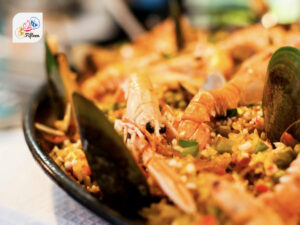
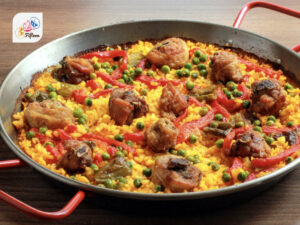

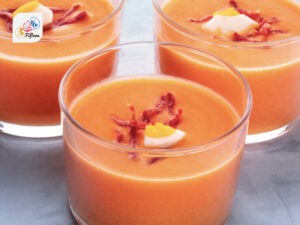
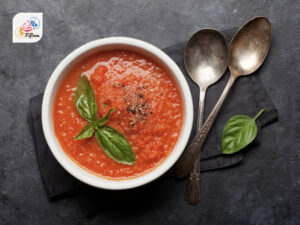
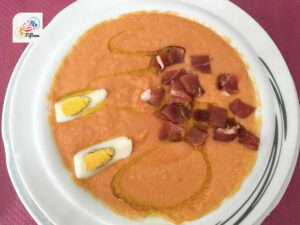
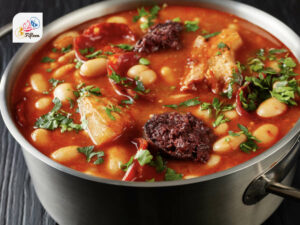
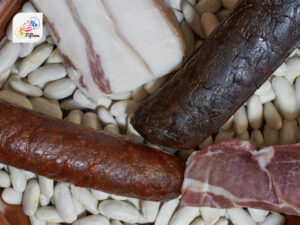
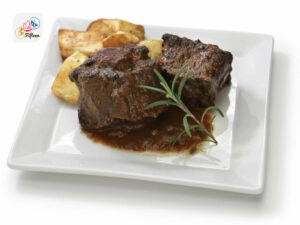
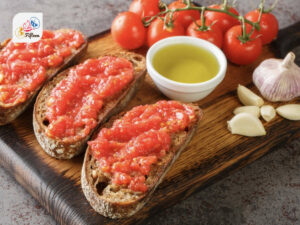


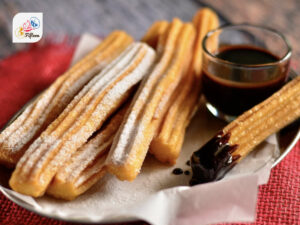
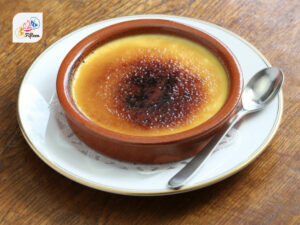

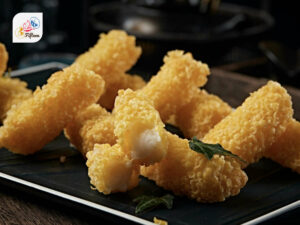
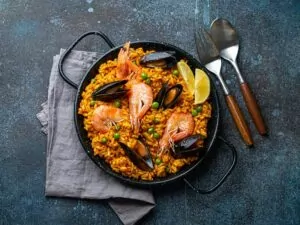
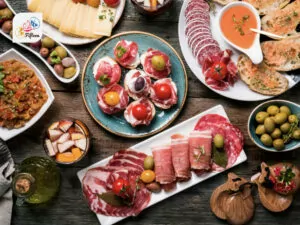
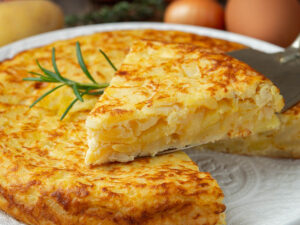
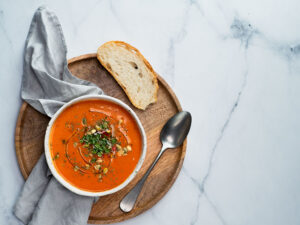
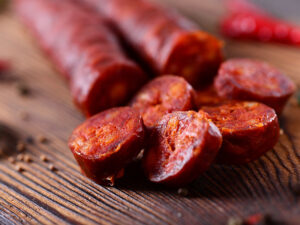

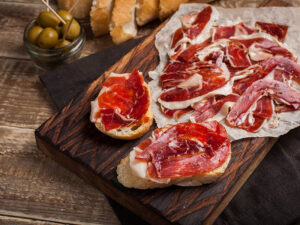
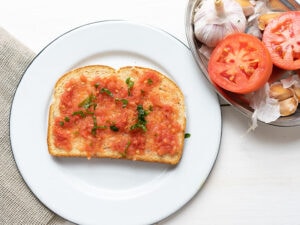
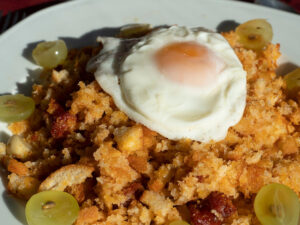
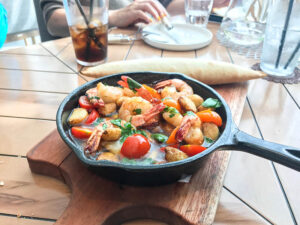
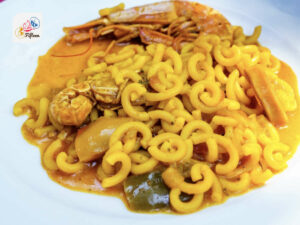
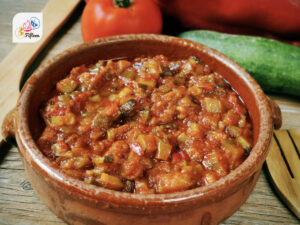
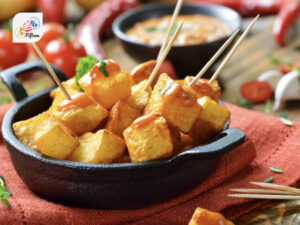
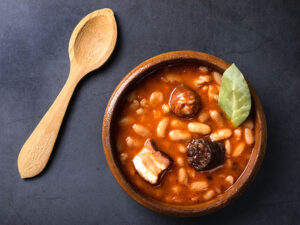
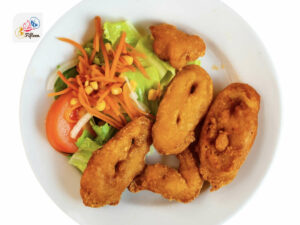
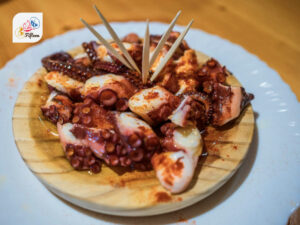
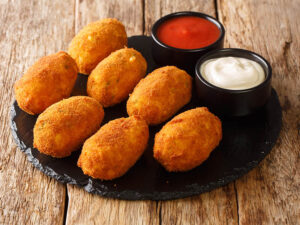
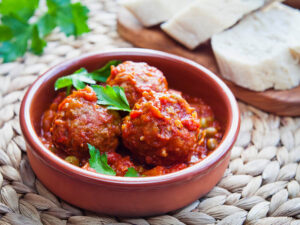
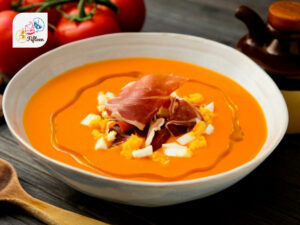
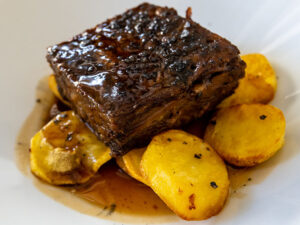
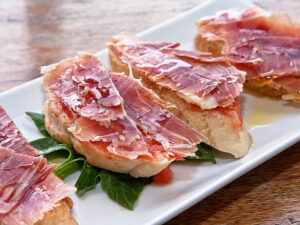
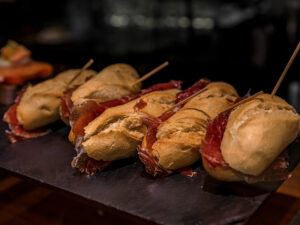

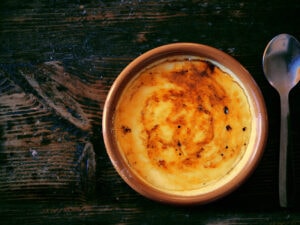



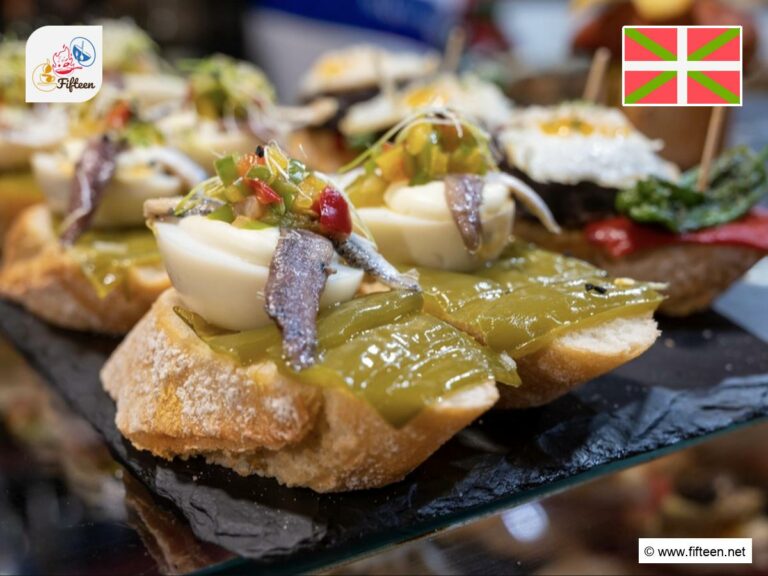
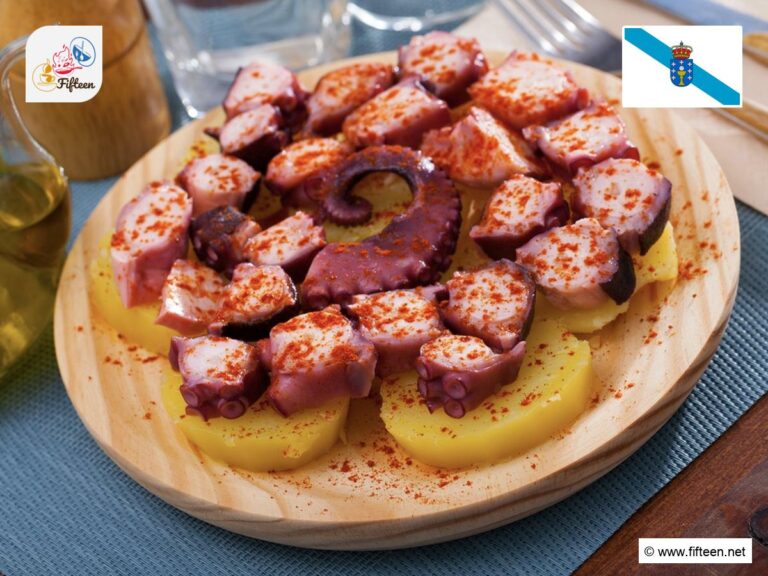
Jamie Scott
Editor in Chief, Senior Content Writer
Expertise
Home Cooking, Meal Planning, Recipe Development, Baking and Pastry, Food Editor, Cooking-video Maker, Western Food Evaluation Expert
Education
Le Cordon Bleu College of Culinary Arts
Local Community College, New York, NY
Jamie Scott is a skilled culinary expert and content creator specializing in Western cuisine. With over 15 years in the culinary field and formal training from Le Cordon Bleu, Paris, Jamie deeply understands how to blend nutrition with delicious flavors. His passion for cooking matches his commitment to making healthy eating accessible and enjoyable.
On Fifteen.net, Jamie brings a fresh perspective to classic dishes and beverages, offering readers insightful recipes, cooking tips, and a fresh view on meal planning that emphasizes taste, health, and simplicity.